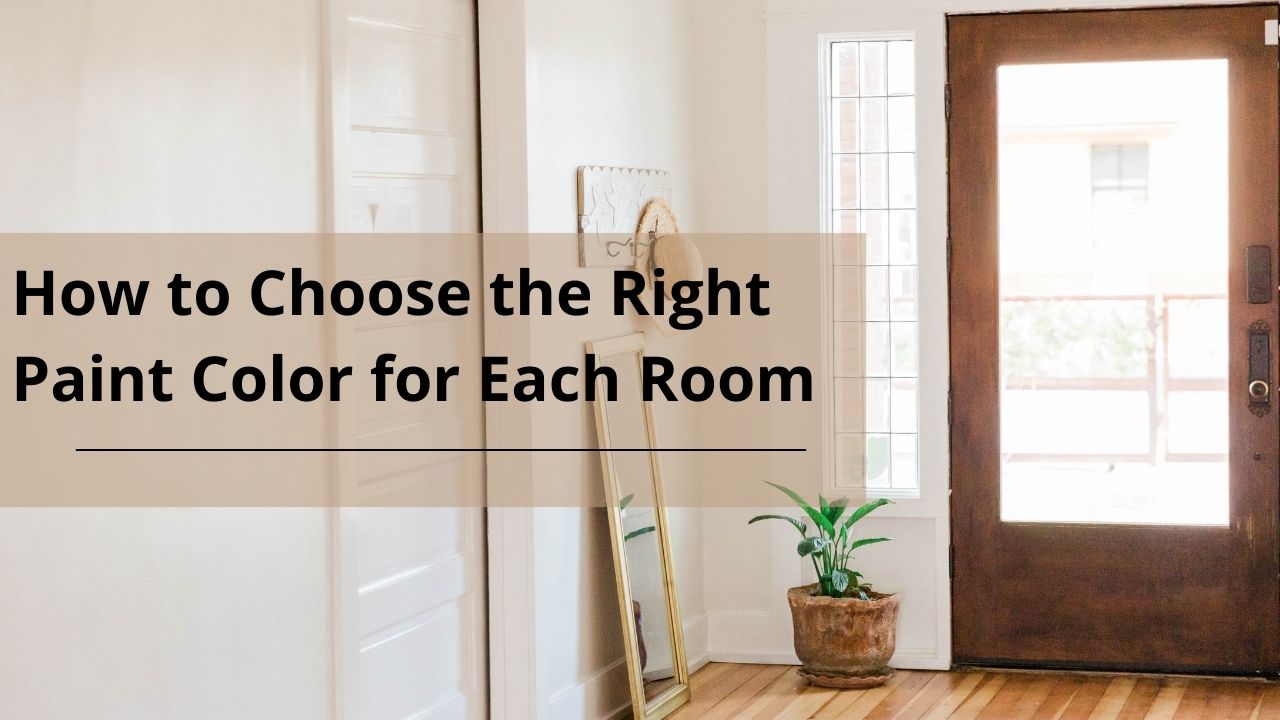Choosing the right paint color for each room can seem like a daunting task, but it’s essential for creating a harmonious and inviting living space. The color of your walls sets the tone for the entire room, influencing not only the aesthetic appeal but also your mood and how you feel in that space. So, how do you pick the perfect hue that balances both function and style? Let’s dive into the art and science of paint color selection to transform your home into a place you’ll love.
Understanding Color Psychology
What is Color Psychology?
Color psychology is the study of how colors affect human emotions and behaviors. Different colors can evoke different feelings and reactions, which makes understanding this concept crucial when choosing paint colors for your home.
How Colors Influence Emotions and Behavior
Colors like blue and green are known for their calming effects, while reds and yellows can energize and stimulate. Understanding these effects can help you choose colors that align with the desired mood for each room.
Choosing Colors Based on Psychological Effects
When selecting paint colors, consider how you want to feel in each room. For instance, serene blues and greens might be ideal for a bedroom where relaxation is key, whereas vibrant oranges and yellows might be perfect for a kitchen where you want to feel invigorated.
Choosing Colors for Different Rooms
Living Room
The living room is often the heart of the home—a space for relaxation and social gatherings. To create a welcoming atmosphere, consider warm and neutral tones like taupe, beige, or soft gray. These colors are versatile and can adapt to various decor styles.
Bedroom
For a bedroom, the goal is to promote relaxation and restful sleep. Soft, calming colors such as muted blues, gentle greens, or serene lavenders work best. Avoid overly bright or stimulating colors that might disrupt your sleep.
Kitchen
The kitchen is a space for activity and nourishment, so choose colors that energize and stimulate appetite. Warm hues like sunny yellows, lively oranges, or rich reds can make your kitchen feel vibrant and inviting.
Bathroom
Create a spa-like retreat in your bathroom with soothing colors. Light blues, soft greens, and crisp whites can evoke a sense of cleanliness and calm, making your bathroom feel like a personal oasis.
Home Office
To enhance focus and productivity in your home office, opt for colors that are known to stimulate concentration. Neutral tones like beige or gray, or calming blues and greens, can create a balanced environment for work.
Factors to Consider When Choosing Paint Colors
Room Size and Lighting
The size of the room and its lighting conditions play a significant role in how a color will appear. Lighter colors can make a small room feel larger and more open, while darker shades add coziness to larger spaces. Always test colors in different lighting conditions to see how they change throughout the day.
Existing Furniture and Decor
When choosing paint colors, consider the colors and styles of your existing furniture and decor. The new paint should complement these elements to create a cohesive look.
Personal Preferences and Lifestyle
Your personal style and lifestyle preferences should guide your color choices. If you love bold and vibrant colors, don’t shy away from incorporating them into your home. Choose colors that reflect your personality and make you feel comfortable.
Trends vs. Timeless Choices
While it’s fun to follow color trends, opting for timeless colors can ensure your space remains stylish for years to come. Consider incorporating trendy colors as accents rather than main hues to keep your space current yet classic.
Testing Paint Colors
Using Paint Samples and Swatches
Before committing to a color, obtain paint samples or swatches. Apply them to your walls to see how they look in your space. This step is crucial to avoid unpleasant surprises.
Applying Test Paints on Walls
Apply test paints in large patches on your walls and observe how they look at different times of the day. This method will help you see how the color interacts with your room’s lighting.
Observing Color Changes in Different Lighting
Colors can appear different under various lighting conditions. Make sure to view your test patches under both natural and artificial light to get a true sense of the color.
Combining and Complementing Colors
Creating Color Schemes
To create a harmonious look, combine colors that complement each other. Use color wheel principles to find shades that work well together and create a balanced, visually appealing space.
Using Accent Colors and Neutrals
Accent colors can add interest and depth to a room. Pair them with neutral tones to create a cohesive look without overwhelming the space.
Balancing Bold and Subtle Shades
Mix bold colors with subtle shades to avoid a room that feels too intense or too dull. This balance will help maintain a dynamic yet comfortable atmosphere.
DIY vs. Professional Help
Benefits of DIY Painting
Painting your home yourself can be a rewarding and cost-effective project. It allows you to have full control over the color application and finish.
When to Hire a Professional Painter
If you’re dealing with complex designs, high ceilings, or if you simply prefer a flawless finish, hiring a professional painter might be the best option. They can ensure precise application and a high-quality result.
Conclusion
Choosing the right paint color for each room is more than just picking a shade you like. It involves understanding the psychological effects of colors, considering the room’s purpose, and testing your choices to ensure they meet your expectations. By carefully selecting your paint colors, you can create a home that reflects your style and enhances your living experience.
FAQs
1. What are the best colors for small rooms?
Lighter colors such as soft whites, pastels, and light neutrals can make small rooms feel larger and more open.
2. How often should you repaint a room?
Typically, rooms should be repainted every 5 to 7 years, but high-traffic areas may need more frequent touch-ups.
3. Can I mix different shades of the same color?
Yes, mixing different shades of the same color can create a sophisticated and layered look. Just be sure to test the combinations first.
4. What should I do if I don’t like the color after painting?
If you’re unhappy with the color, consider repainting or using accessories and decor to adjust the room’s look.
5. How can I make a room look brighter with paint?
Use light, reflective colors and ensure the room has adequate lighting. Glossy finishes can also enhance brightness by reflecting more light


